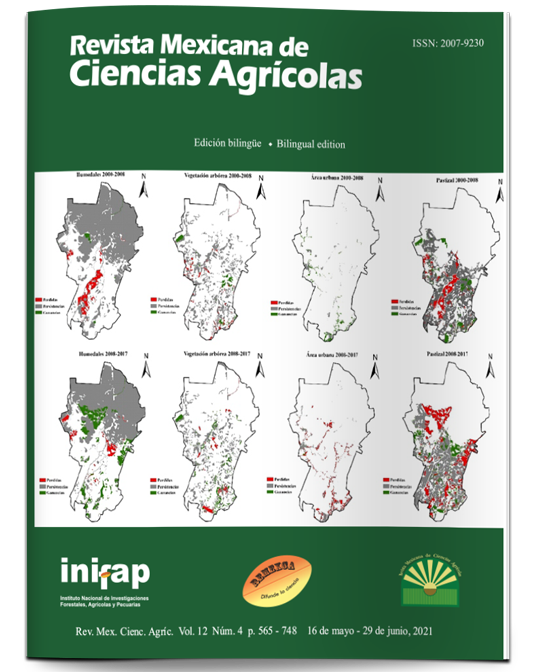Edaphoclimatic zoning of cacao cultivation in the state of Chiapas
DOI:
https://doi.org/10.29312/remexca.v12i4.2518Keywords:
Theobroma cacao L., areas, climate, municipalities, soilsAbstract
The state of Chiapas is the second largest cacao producer in Mexico; however, agricultural yields are low, and in many regions, there are limits related to edaphoclimatic factors. Therefore, the research aimed to identify edaphoclimatic areas that meet the requirements of cacao, based on achieving a higher yield in the state of Chiapas. The methodology used was founded and designed as a simplified form of the general methodology of FAO and based on methodological proposals made in coffee and cacao cultivation in other countries, with specific adaptations to the specific conditions and existing information of Chiapas. The edaphoclimatic conditions characterizing four categories of zoning (optimal, medium optimal, acceptable and unsuitable), represented on maps at 1:100 000 scale, were determined. A total area of 1 549 804.4 ha with different productive potentials was identified, representing 20.08% of the total area of the state and distributed in 59 municipalities. Of these, 34 have no history of cultivation, indicating the possibilities of exploring new areas for it. Extreme temperatures (low and high) and the physical properties of the soil were the main limiting factors for cacao development and occupy the largest unsuitable area of the state. From a practical point of view, the results are a tool for making decisions on a wide scale for the establishment of cacao cultivation in Chiapas.
Downloads
Downloads
Published
How to Cite
Issue
Section
License
The authors who publish in Revista Mexicana de Ciencias Agrícolas accept the following conditions:
In accordance with copyright laws, Revista Mexicana de Ciencias Agrícolas recognizes and respects the authors’ moral right and ownership of property rights which will be transferred to the journal for dissemination in open access. Invariably, all the authors have to sign a letter of transfer of property rights and of originality of the article to Instituto Nacional de Investigaciones Forestales, Agrícolas y Pecuarias (INIFAP) [National Institute of Forestry, Agricultural and Livestock Research]. The author(s) must pay a fee for the reception of articles before proceeding to editorial review.
All the texts published by Revista Mexicana de Ciencias Agrícolas —with no exception— are distributed under a Creative Commons License Attribution-NonCommercial 4.0 International (CC BY-NC 4.0), which allows third parties to use the publication as long as the work’s authorship and its first publication in this journal are mentioned.
The author(s) can enter into independent and additional contractual agreements for the nonexclusive distribution of the version of the article published in Revista Mexicana de Ciencias Agrícolas (for example include it into an institutional repository or publish it in a book) as long as it is clearly and explicitly indicated that the work was published for the first time in Revista Mexicana de Ciencias Agrícolas.
For all the above, the authors shall send the Letter-transfer of Property Rights for the first publication duly filled in and signed by the author(s). This form must be sent as a PDF file to: revista_atm@yahoo.com.mx; cienciasagricola@inifap.gob.mx; remexca2017@gmail.
This work is licensed under a Creative Commons Attribution-Noncommercial 4.0 International license.



